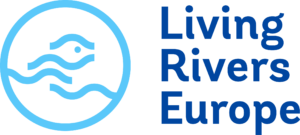The European Commission's Water Resilience strategy lacks binding commitments and dedicated funding.
Yesterday (04 June 2025) the European Commission has launched the long-awaited EU Water Resilience Strategy. Despite promises for a strong roadmap to bring resilience to Europe, currently experiencing a dire water crisis, the Commission’s Strategy generally lacks binding commitments, dedicated funding, and introduces only limited governance tools to support implementation.
The
EU Water Resilience Strategy includes a number of positive elements, including a strong call to implement existing EU water laws for achieving water resilience. The Commission has also made multiple references to Nature-based Solutions (NbS), an improvement compared to the
European Parliament’s position, which favoured grey infrastructure and techno-fixes - approaches that have proven insufficient in the past - over nature. However, while the Commission proposes a ‘Sponge Facility’ and an initiative on Blue and Green corridors as frameworks to scale up NbS, it does not provide legally binding targets or dedicated funding.
The Living Rivers Europe coalition said:
“Nature must not become a buzzword to make the text look ‘greener’. We are bringing floods, droughts, and polluted waters upon ourselves as a result of poor water management, and yet we expect the most effective solutions to require no investment - all while continuing to destroy nature? The European Commission must elevate the proposed Sponge Facility to a flagship initiative under the next Multiannual Financial Framework, and prioritise the restoration of natural water retention. The Commission must also ensure that infrastructure projects, such as reservoirs and desalination plants, are considered only as a last resort, always under strict environmental safeguards.”
To tackle water pollution, the Commission recognises PFAS and nutrient pollution as key threats, and proposes integrated monitoring, support for Member States to reduce nutrient run-off, and a Public-Private Partnership for PFAS detection and remediation. However, the latter remains conditional on “the right partners being found”, with the Strategy failing to suggest measures for prevention at-source and enforce strong accountability for polluters. Moreover, the ongoing negotiations to update regulatory standards for water pollutants such as PFAS are being used to backtrack on existing legal protections.
“PFAS are contaminating our drinking water and ecosystems across Europe, and citizens are paying the price. If the European Commission is truly set to make the EU water-resilient, measures to address PFAS should tackle upstream prevention - for example, by restricting the use of PFAS-containing pesticides and fertiliser coatings that lead to diffuse pollution from agricultural run-off - not just end-of-pipe treatment. It should also reinforce the application of the Polluter Pays Principle, ensuring that polluting industries bear the cost of monitoring, treatment and remediation - not water service providers or citizens,” added the coalition.
The Strategy also proposes voluntary targets to improve water efficiency by 10% by 2030, but provides no baseline, sectoral roadmap, or enforcement mechanism to achieve it. In addition, it fails to set binding limits or uphold ecological flow requirements. Without a concrete threshold, the EU’s broader climate adaptation goals risk falling flat: an ‘aspirational target’ alone will not shield Europe from worsening droughts, floods or collapsing ecosystems.
The European Commission also confirmed it will revise the Marine Strategy Framework Directive, a long-overdue opportunity to address the impact of human activities - including carbon emissions - on nature. “Our ocean is in such poor condition that in some places it is no longer safe for people to swim,” said The Living Rivers Europe Coaltion.
“If the water is too polluted for us, imagine what that means for the marine ecosystems, including the seafood we eat. That is why this revision must not result in weaker rules. On the contrary, it should solidify the EU’s ambition to achieve healthy, resilient and productive ecosystems in the world’s largest exclusive economic zone.”
In the coming months, eyes will be on whether the Commission’s Water Resilience Strategy materialises across the EU and on how its positive elements are put into action, from funding decisions and national planning, to follow-up measures by the European Commission to enforce our flagship water law, the Water Framework Directive. The real test is whether NbS will be prioritised, polluters held accountable, and EU water laws enforced.
The Living Rivers Europe NGO coalition will be watching closely and stands ready to contribute to the EU’s paradigm shift in how it manages and values its most precious resource.


Through their active role in the Living Rivers Europe (LRE) Coalition, the European Anglers Alliance (EAA) – a founding coalition member – highlights the critical state of Europe’s freshwaters, particularly free-flowing rivers. Too often, the connection between rivers, oceans, seas, and floodplains is disrupted. Restoring free-flowing rivers is essential for healthy freshwater fish species, robust aquatic ecosystems, and climate change resilience.
More information on the Living Rivers Europe coalition - and EAA's involvement can be found below